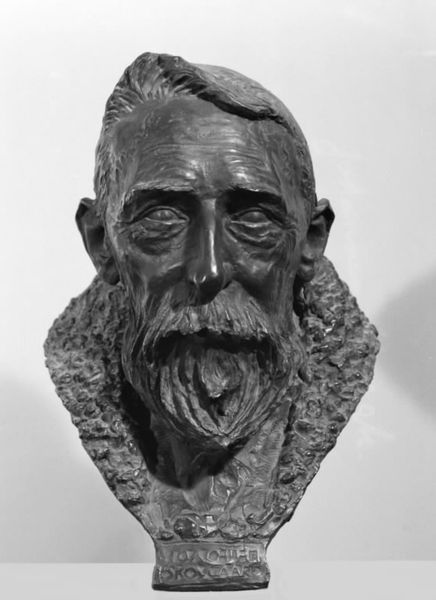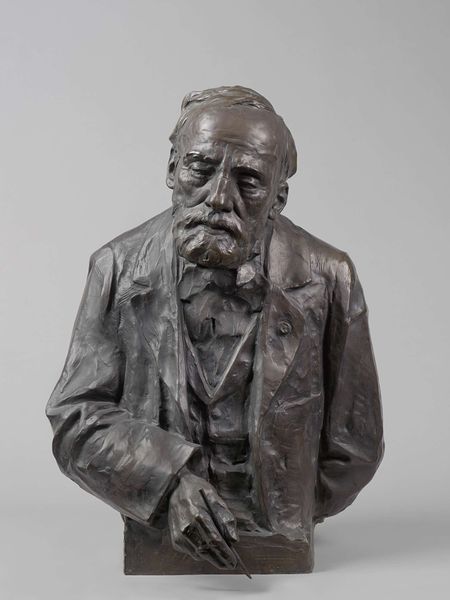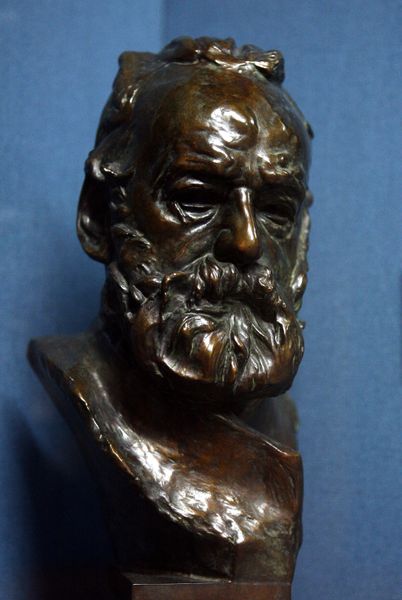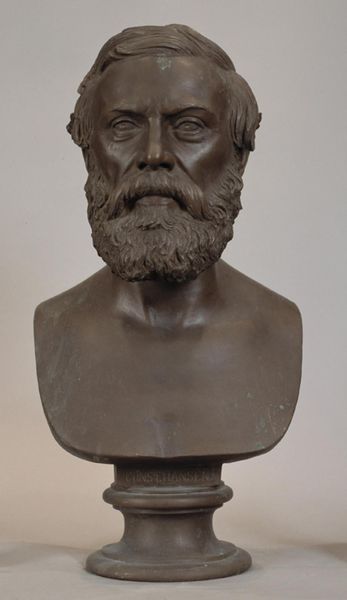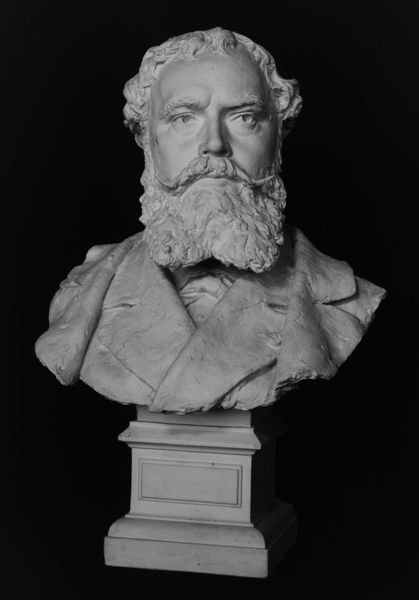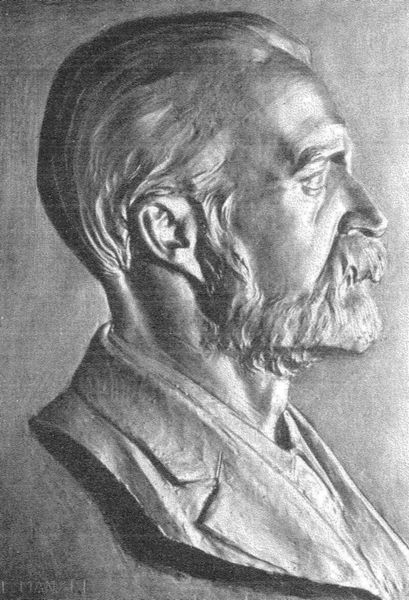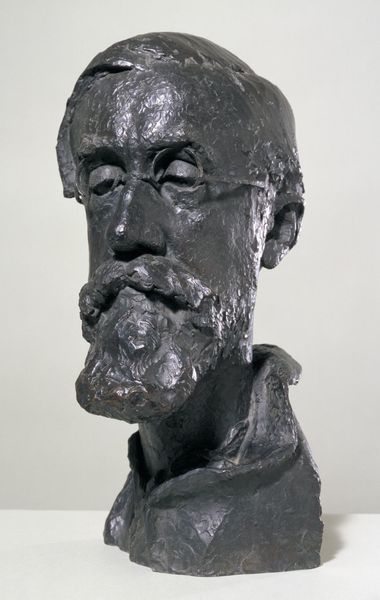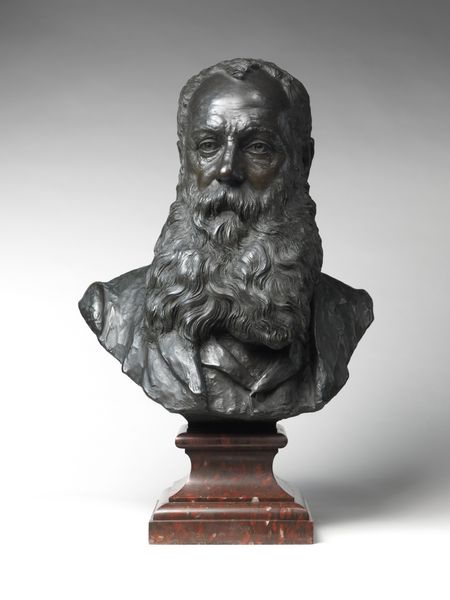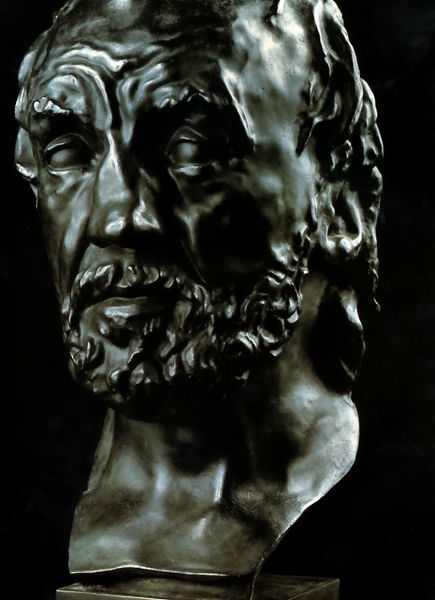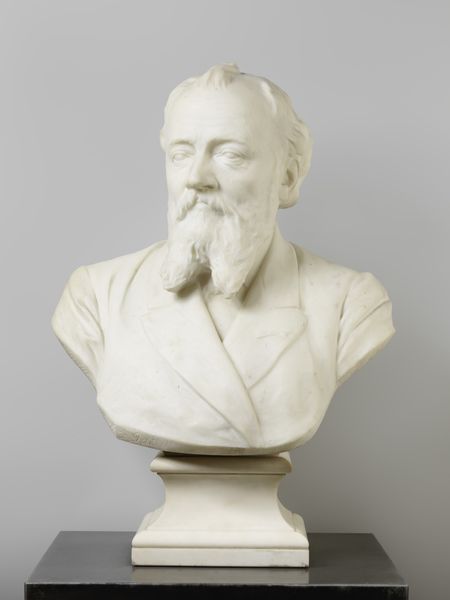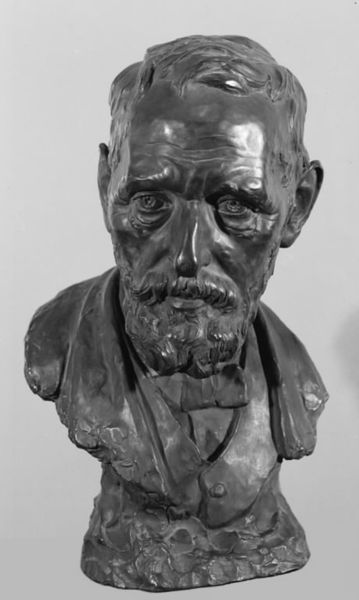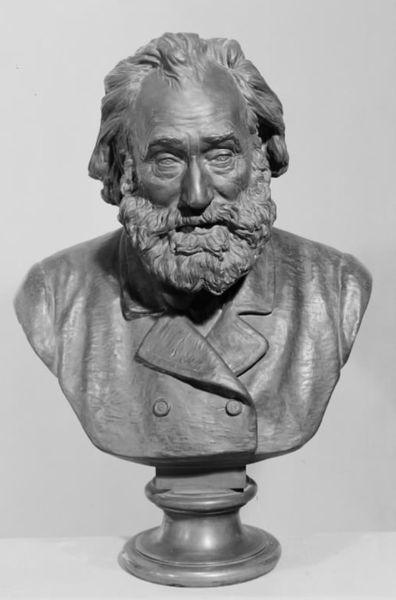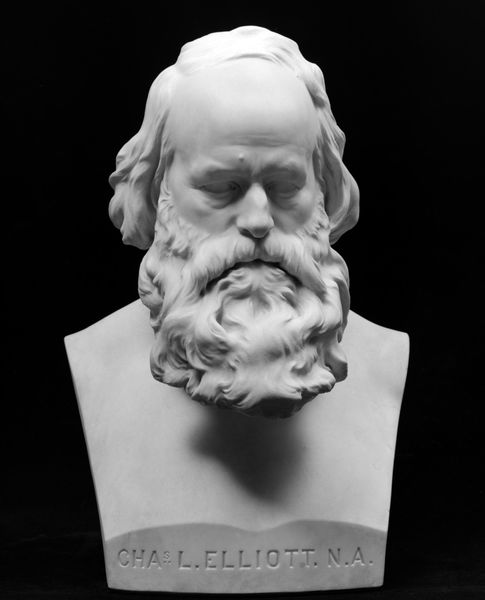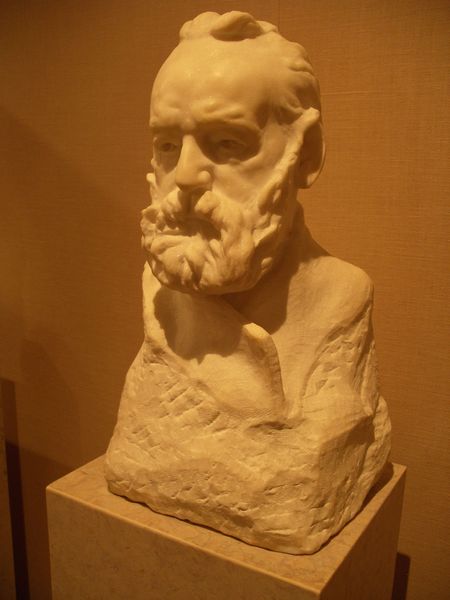
bronze, sculpture
#
portrait
#
sculpture
#
bronze
#
figuration
#
sculpture
#
decorative-art
#
realism
Dimensions: Overall: 17 1/2 × 12 1/2 × 11 in. (44.5 × 31.8 × 27.9 cm)
Copyright: Public Domain
Curator: Before us stands "Victor Hugo," a bronze sculpture crafted by Auguste Rodin in 1883. It resides here at the Metropolitan Museum of Art. Editor: Its mood is intense. Rodin captures the literary giant with furrowed brow, suggesting deep contemplation, almost worry. Look at how the light catches the ridges of the face, all that gorgeous textural variation in the bronze. Curator: Rodin created this around the time Hugo was at the height of his literary fame and political influence. There’s an effort here to translate his intellectual prowess into a palpable physical form. Remember Hugo as a writer, a politician, and a personality helped shaped France. Editor: Precisely. That strong, upward thrust of the bust lends it power, gives Hugo almost mythic status. But I’m equally fascinated by the expressive manipulation of the medium itself, notice the textured and roughened appearance versus smooth surface; it avoids the cold perfection often found in sculpture. Curator: The surface indeed underscores Rodin’s radical departure from conventional sculpture. He embraces fragmentation, asymmetry… a break from classical ideals in his pursuit of raw emotional authenticity. It echoes impressionistic sensibilities, translated from painting to the three-dimensional form. Editor: Absolutely. Consider the historical context. We see in Rodin's approach hints of the burgeoning Symbolist movement. The play of light and shadow creates a dramatic tension that elevates the work beyond simple representation. Curator: And there's something deeply affecting about this study in texture. Hugo’s skin appears almost topographical—a landscape etched by time and thought. Its physical manifestation speaks of struggle. Editor: This work captures much more than physical appearance—it shows the turbulent inner life and artistic essence. Curator: Ultimately, I see "Victor Hugo" as a testament to the power of artistic innovation, demonstrating the potent potential for portraiture to push boundaries and challenge perceptions. Editor: And it stands here, an artifact that offers both formal ingenuity and insight into cultural history. Fascinating interplay, indeed.
Comments
No comments
Be the first to comment and join the conversation on the ultimate creative platform.
